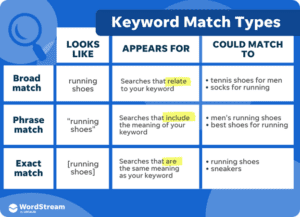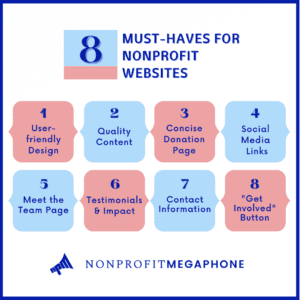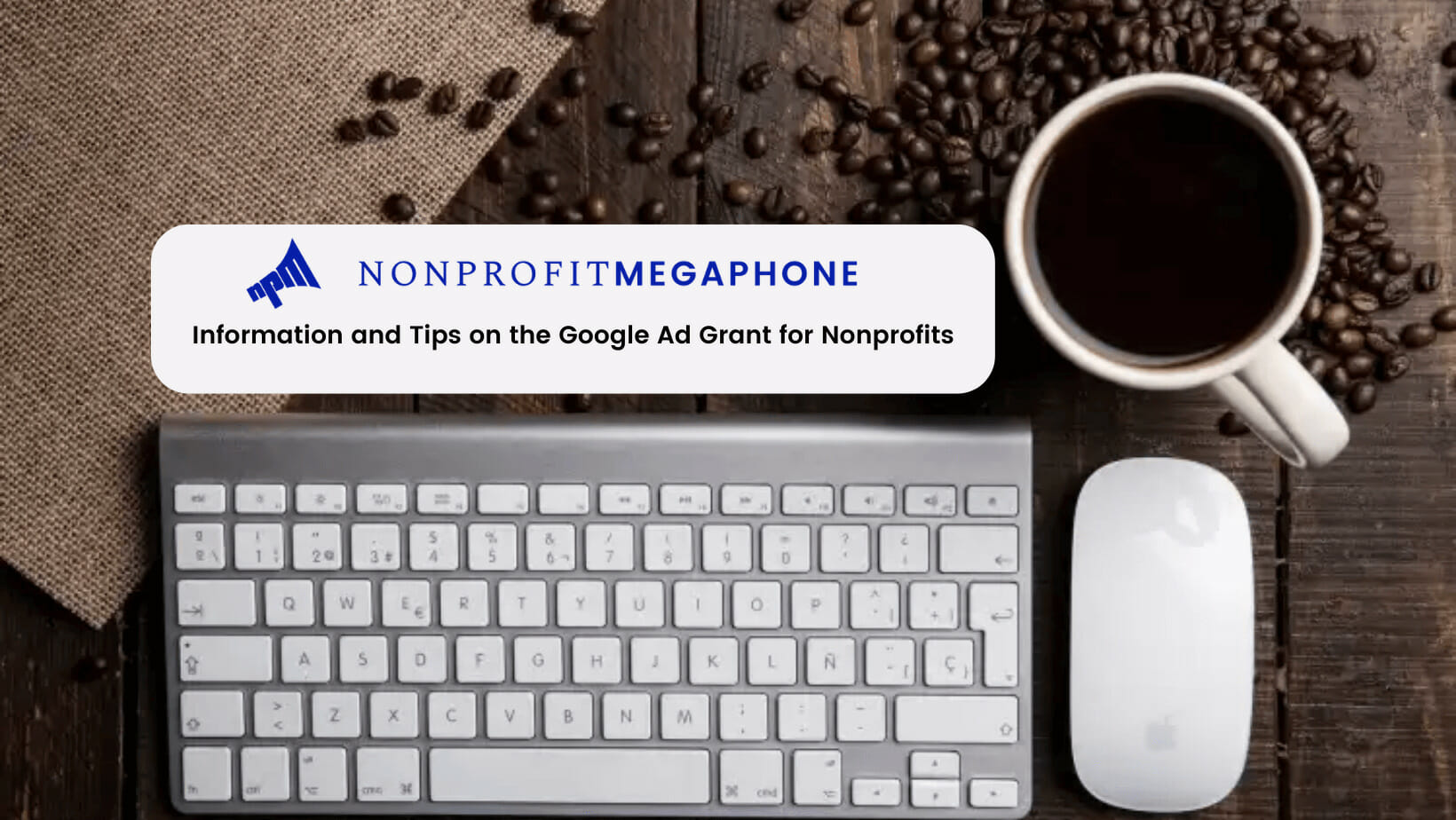Information and Tips on the Google Ad Grant for Nonprofits
The Google Ad Grant for nonprofits have provided free advertising for nonprofit organizations since 2003. This fantastic Google program grants each qualifying nonprofit up to $10,000 per month in search ads shown on Google.com.
While this is an excellent resource for nonprofits, many organizations have not obtained the Google Ad Grant for their nonprofits yet. Some haven’t succeeded with their Google ads thus far.
Let’s discuss some of the most frequently asked questions about the Google Ad Grant. We will also dive into how to see results from Google Ads. We want every nonprofit to get the most out of this free program!
Who is eligible for the Google Ad Grant?
To qualify for the grant, nonprofit organizations must meet the following requirements:
- Your nonprofit is in an eligible country. Although the Google Ad Grant is expanding, it is not yet available in all countries. For a list of eligible countries and their requirements, click here.
- You have 501(c)(3) as a nonprofit. This status is required for all nonprofits to qualify in the United States. In other countries, nonprofits must have similar classifications to qualify (see the linked list above for details).
- Your organization is not a hospital, school, college, or governmental institution. Philanthropic arms of educational institutions may still qualify.
- You must have an SSL certificate installed on your website if applying for the grant for the first time. This means that a lock icon appears in the navigation bar in Google Chrome. If you see “not secure” next to your website’s URL in Chrome, SSL is not installed. Sometimes, there is a configuration issue.
- You have a high-quality website that is hosted on your own domain. For example, use “ournonprofit.org,” not “ournonprofit.weebly.com.” To understand Google’s specific requirements for your website, click here.
If you meet these criteria, you are eligible for the Google Ad Grant! For additional information and eligibility tips, check out our video and article, “Google Ad Grant Eligibility Explained.”
What are the steps to apply for the Google Ad Grant?
1. First, become a member of Google for Nonprofits through TechSoup.
- If you have not previously registered your organization with TechSoup.org, sign up for an account here. TechSoup provides discounts and other services that you may find worthwhile. Most importantly, TechSoup provides a Validation Token that Google uses to verify your eligibility.
- Use your TechSoup Validation Token to enroll with Google for Nonprofits.
2. Second, submit your nonprofit’s website to Google for review.
- Sign into Google for Nonprofits.
- Then click “Google Ad Grants”>”Get Started” under “Request a Google for Nonprofits Account.”
- Fill out the assessment by clicking the eligibility form link. Click “Activate” to submit your organization’s website for review.
Pro Tip: During the application process, you will be asked whether you wish to sign up for a “Smart Campaigns” or a “Classic” Google Ads account. Apply for the Classic version to access the full suite of tools and options available.
6 Tips for utilizing the Google Ad Grant to the fullest
While the Google Ad Grant gives nonprofits $10,000 in monthly ad credits, many organizations reach their goals without using the total amount. This is excellent news! However, these ad credits do not roll over from month to month. Therefore, you’ll want to develop a solid strategy to get the most out of this program.
1. List your goals in order of priority.
You have many goals, and figuring out where to start might be challenging. As a first step, list what you would like to accomplish with Google Ads. Do you want to grow awareness of your impact through your blog? Promoting your blog through an ad campaign would be a great start. Maybe your organization desperately needs volunteers to reach several important milestones for those you are helping. In this case, you can focus on an ad campaign that resonates with the values of your target volunteer audience.
2. Select your top five goals for the first campaigns.
Start with 3-5 campaigns. You’ll get the best results by starting with your top 3-5 goals for these campaigns. While you can run more, managing more than this amount at once may be difficult. Since each campaign will require your attention to be effective, you should choose your campaigns based on what is the highest priority to advertise.
3. Be intentional with your ad groups.
Be specific with your ad words for each campaign, keeping your goals in mind. It’s most effective to have a group of closely related keywords and ads that target various related phrases. See the image below from WordStream for a simple example of keyword phrases.

Image credit: WordStream
4. Prepare your website with your target audience in mind
Since your ad campaigns can potentially increase your site visitors considerably, you’ll want to increase the chances that visitors act while there. What does preparing your website for your target audience mean?
First, ensure that your website has a clean, modern, and user-friendly design. Use easy-to-read fonts and high-contrast color pallets. Keep visitor accessibility in mind as well. Also, test your website on mobile devices to ensure the layout is mobile-friendly.
In addition to general design tips, we recommend this list of components to be included on your nonprofit website:
- Have at least ten promotable pages with at least 300 words each.
- Include a blog with searchable posts that are 700-1000 words long.
- Install Google Tag Manager to count important button clicks.
- Keep call-to-action forms on your website. If using a PDF form, ensure that this is its own landing page on your site.
- Include “thank you” landing pages for all call-to-action forms.
- Keep your website security updated and address any security flags.
Here, we have included eight recommended nonprofit website must-haves.

As we have noted, it is essential to have quality content on your website! This is important for Google Ad Grant compliance and increasing ad campaign success. When new visitors come to your website, you will want them to understand your mission and impact quickly. To learn more about how your content helps you to reach your marketing goals, check out our article, “3 Reasons to Use Web Content for Marketing Your Nonprofit.”
5. Build and maintain your social media presence
Although this is talked about frequently, we can’t stress enough the importance of a nonprofit’s social media presence. Here is why:
While the Google Ad Grant is a game-changer for nonprofit marketing, not every potential supporter will find you through Google. Consider the way that you browse online. How many times have you noticed an organization or business for the first time on social media?
Think of social media as a valuable asset in your marketing toolbox to utilize your Google Ad Grant. For example, you may receive website visitors from your Google Ad Campaigns that want to check out your social media presence from the icons on your website. If you don’t have your social media linked on your website or your social page on that platform is bare, your potential supporters may choose a nonprofit that shares more of its impact.
Remember, your social media posts can tell stories in real time that new and existing supporters otherwise wouldn’t see. You can share your impact in regular updates, recognize a sponsor, announce an upcoming fundraiser, and provide frequent educational content about your mission. The possibilities are endless. Use niche-specific hashtags, keywords, and trending audio for the best results to reach a larger audience.
Here are some quick tips for nonprofit social media growth:
- Post regularly at the times when your audience is most active.
- Use multimedia, including video, text, and infographics.
- Engage with other accounts. This is one way the algorithm decides whom to show your content. Don’t “post and ghost.”
- Write meaningful captions and be intentional with hashtags. Experts currently recommend that we go back to adding hashtags in the caption, not the comments.
- Make your social media icons easy to find on your site’s homepage.
6. Track your Google Ad performance
Naturally, you can’t improve what you can’t see. Like many tools, the Google Ad Grant’s success hinges on your nonprofit’s continuous evaluation and adjustment.
Through valuable data, Google is great about letting you know which campaigns are working and which ones aren’t. This prevents you from expending energy, resources, and ad-spend on the wrong campaigns.
By taking the time to understand and adjust your campaigns as needed, you’ll streamline the process of seeing results with Google Ads.
Maintaining compliance
Since you won’t want to lose the great benefits of the Google Ad Grant, you’ll need to ensure that you stay in compliance. Because the grant renews monthly, we recommend setting a recurring to-do for your compliance checklist.
This is a list from Google of common violations that can cause suspension of the Google Ad Grant:
- Abusing the ad network or misrepresenting your organization
- Losing your nonprofit status
- Not keeping your CTR (click-through rate) at 5% or higher
- Failing to meet Google for Nonprofits eligibility criteria
- Needing re-verification (this is primarily for organizations who signed up with Google for Nonprofits before 2016)
- Repeatedly violating Google’s Terms & Policies
How to know when you need help
In some cases, researching and seeking Google support can solve problems and keep your organization on the right track with the Google Ad Grant. However, we recognize that every nonprofit faces the challenge of not having enough help in some regard. You’re busy changing the world, so your plate might be full!
You might consider seeking help for the following reasons:
- You’ve encountered an obstacle while trying to acquire the grant.
- Your account has been suspended, and you need help with reactivation.
- Tracking progress is challenging because some data doesn’t make sense.
- You’re struggling to understand how you can improve your campaigns.
- You aren’t seeing the results you had hoped for with the Google Ad Grant.
- Managing the Grant is entirely too time-consuming for your team.
- You find the Google Ad Grant application process or management overwhelming.
We fully understand that while the Google Ad Grant is a fantastic tool, it can be challenging to figure everything out.
Getting help with your Google Ad Grant
For general questions about the grant or your account, you can visit Google’s Ad Grants Help page. This page includes frequently asked questions and solutions to common problems. Also, they have provided links at the bottom of the page to “ask the help community” or to contact Google for assistance.
If you need additional help acquiring or managing the Google Ad Grant, you may be interested in partnering with Google Certified Professionals, like our team at Nonprofit Megaphone.
Professional grant management saves you time, ensures the proper steps are followed, and helps you see faster results. At Nonprofit Megaphone, we were once shocked to learn that 75% of eligible nonprofits had either not heard of or were not currently using the Google Grant. Therefore, we set out to change that.
We now have a 100% success rate in acquiring the grant and currently manage more than 48 million ad dollars. If you are considering that your organization could benefit from our experience, feel free to connect with us for a consultation.
Conclusion
The Google Ad Grant is one of the most under-utilized resources nonprofits have for growing their impact and awareness around their causes. Many organizations aren’t aware that they qualify or haven’t gotten the most out of the Google Ad Grant. We hope that this article has answered essential questions you may have had about applying for the grant, seeing success after acquiring it, and getting help if you need it. For more Google Ad Grant tips and nonprofit marketing strategies, check out our blog and Instagram.






